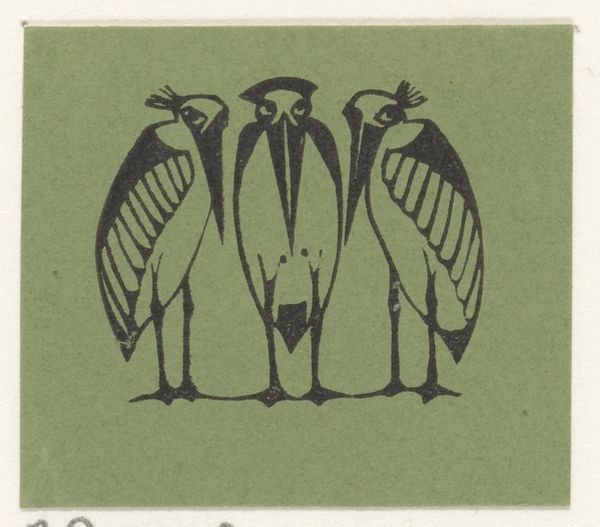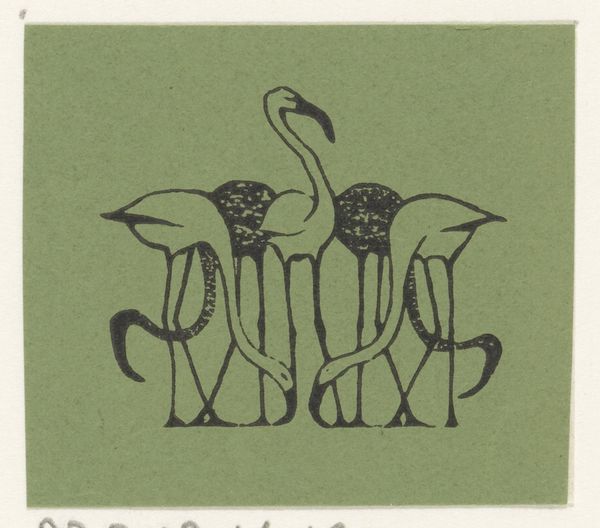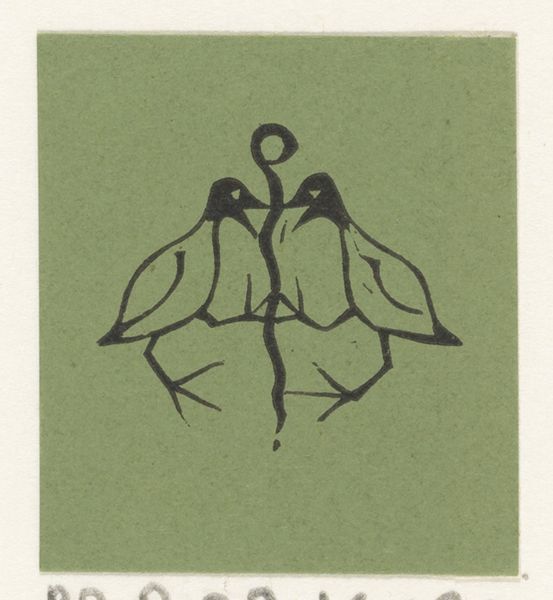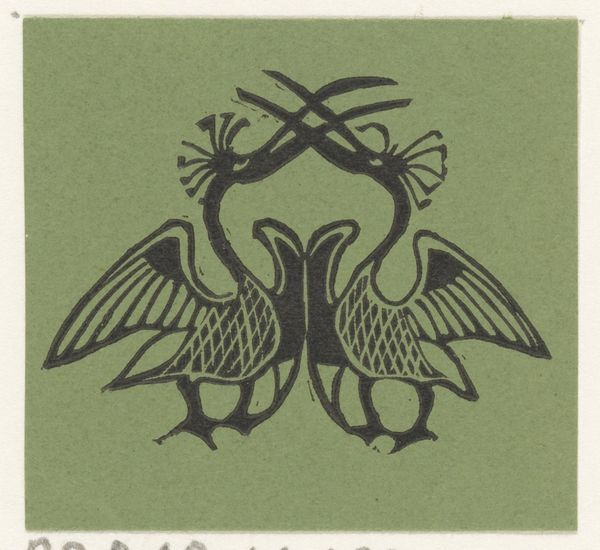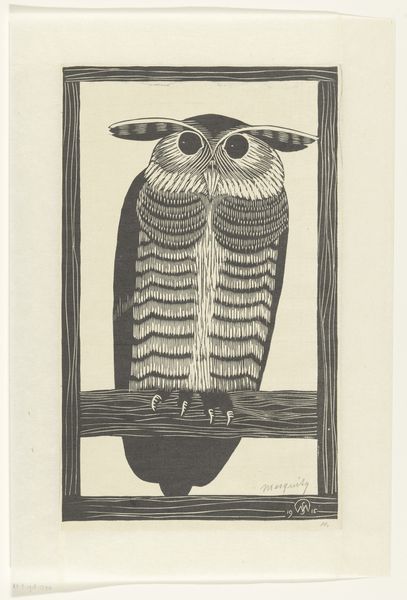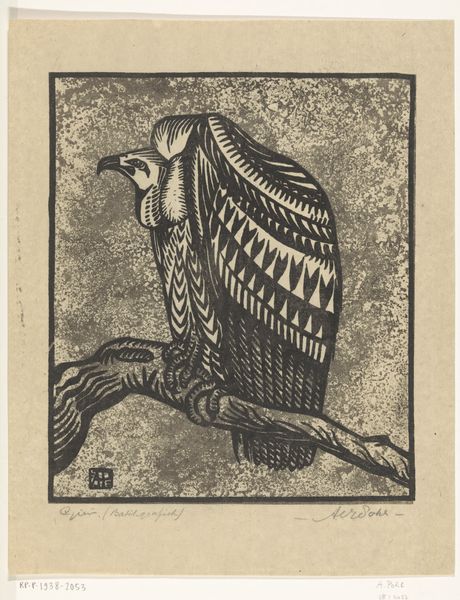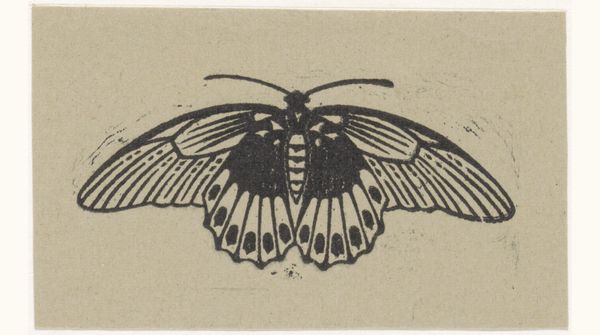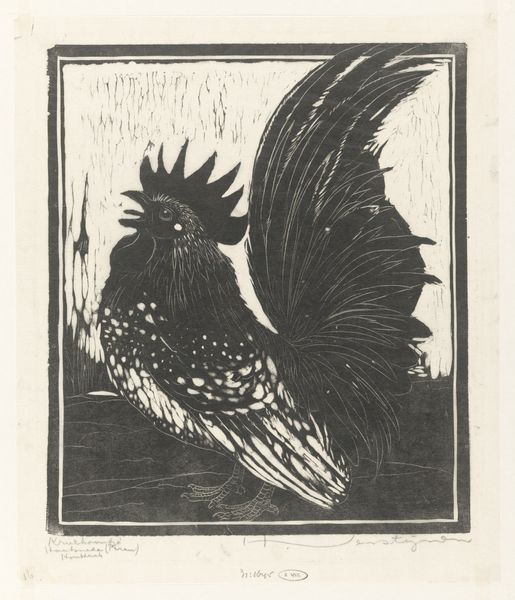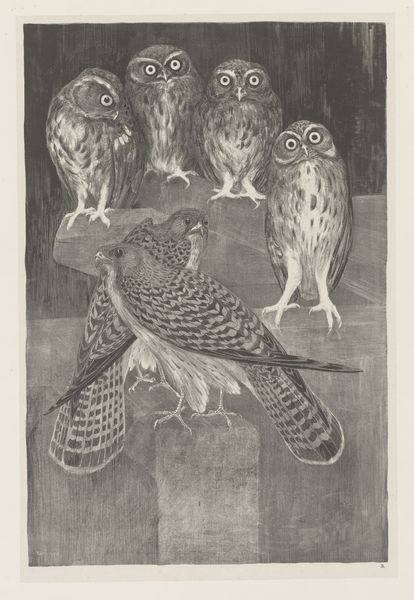
drawing, print, woodcut
#
drawing
# print
#
landscape
#
figuration
#
form
#
woodcut
#
line
#
symbolism
Dimensions: height 45 mm, width 41 mm
Copyright: Rijks Museum: Open Domain
Curator: This is Gerrit Willem Dijsselhof's "Vignet met drie slapende uilen" from 1892, currently residing here at the Rijksmuseum. It's a woodcut print on paper. Editor: Three owls, perched close together... They evoke such a sense of stillness, almost a muffled quietude. I'm drawn to the simplified forms and the muted color palette. Curator: Precisely! Note the sharp lines and deliberate composition. The symmetry achieved by the flanking owls, with the centered owl serving as the focal point, provides a visually satisfying balance. Editor: It also hints at Dijsselhof's production process. The distinctness of the medium—that of a woodcut—demands a reductive method. Notice how that informs not only the visual vocabulary of simplified shape but also influences its themes. The reduction of material complexity mirrors the reductive treatment of the subject matter. Curator: It’s compelling how the use of negative space, particularly within the bodies of the owls, generates patterns and texture. This, of course, amplifies the image’s symbolic dimension. The owl, frequently associated with wisdom, takes on new layers within the context of this Symbolist movement. Editor: The context of this piece seems crucial. Thinking about the manual labour involved in carving the block, printing each individual vignet – it adds a layer to my understanding. The artist's physical engagement is embedded within the artwork, complicating this idea of 'wisdom.' What kind of wisdom comes from laborious, almost meditative making? Curator: The composition leans towards an almost graphic quality. The simplification is so strong, and the piece evokes that sense of a emblem or icon rather than a naturalistic representation. The rhythm in line, the echoing curves, work together to solidify the form, bringing it into the foreground of one’s visual reception. Editor: This resonates beyond just a formal, emblematic design. I see it reflecting back on labor, craft, and repetition – of human hands deliberately, repetitively working with matter, producing objects intended to serve as vehicles of wisdom. What's wisdom without labor? Curator: I appreciate how we both located distinctive formal properties and simultaneously unlocked how meaning can emerge from their combined effects. Editor: Yes, examining Dijsselhof's print through formal elements in tandem with production illuminates so much. A captivating interplay!
Comments
No comments
Be the first to comment and join the conversation on the ultimate creative platform.
